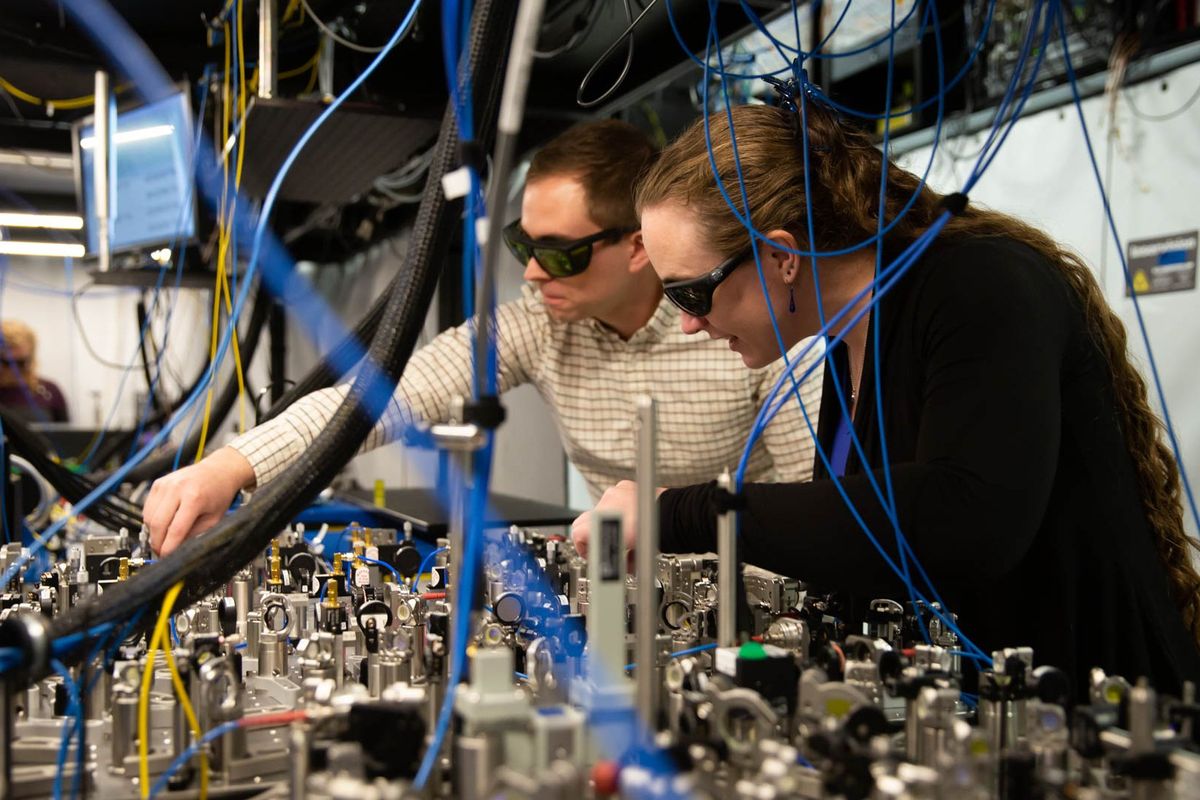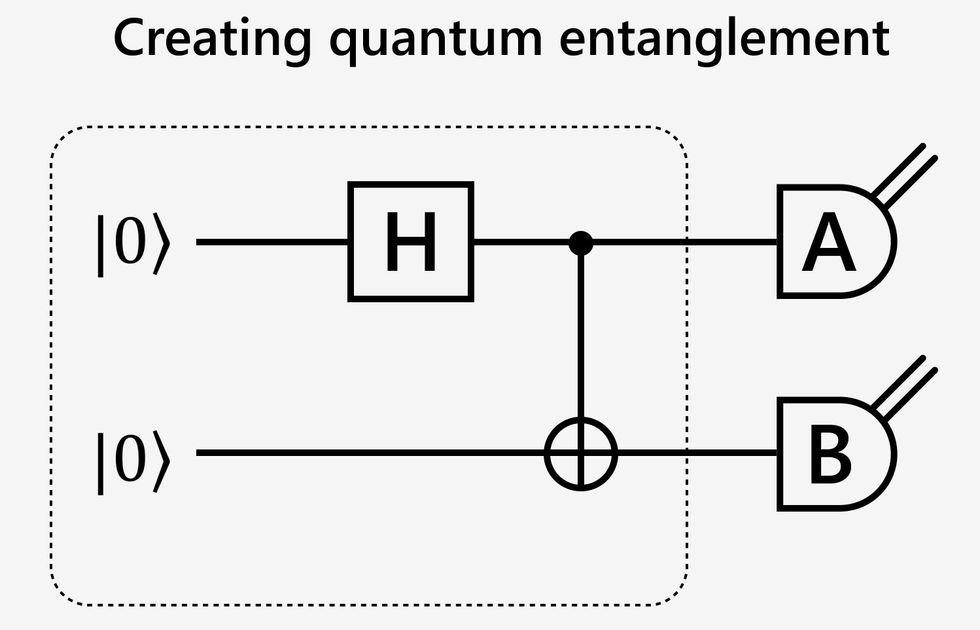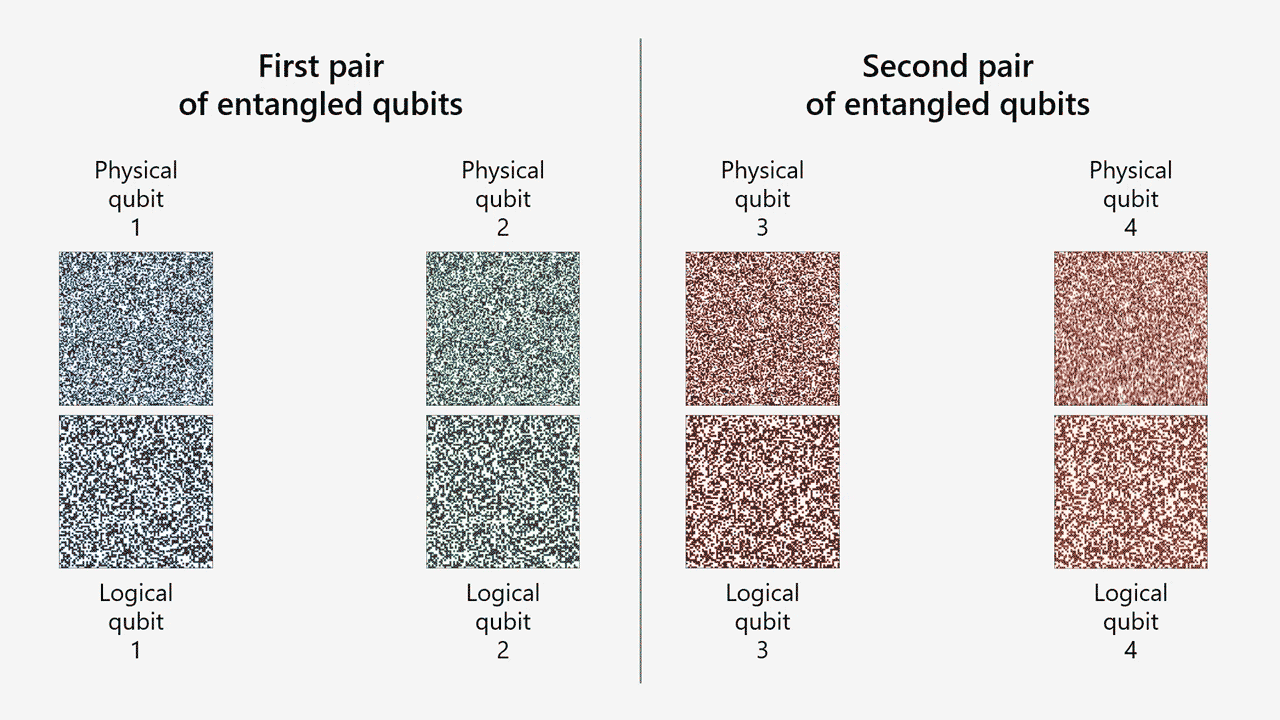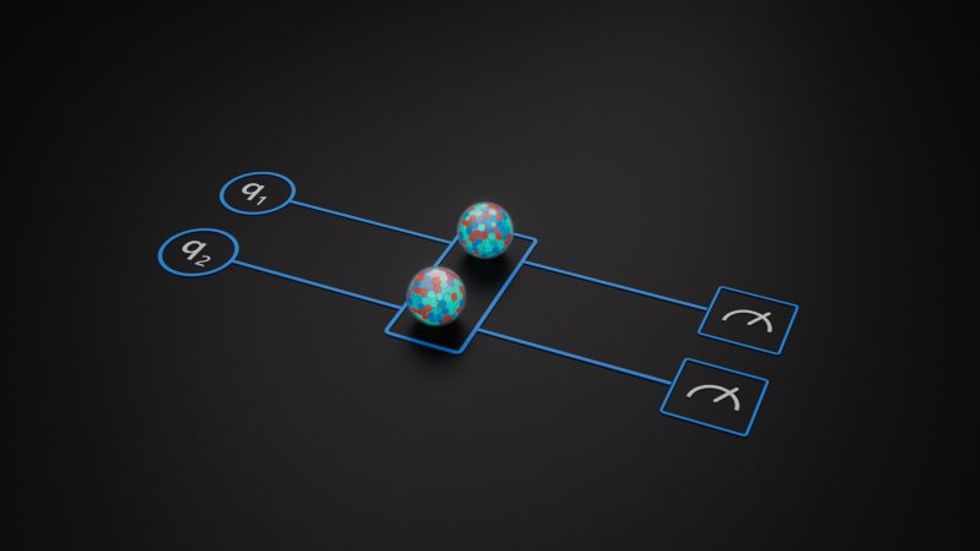
Qubits, the fundamental component of every quantum computer, are currently very error-prone pieces of technology. What’s called fault-tolerant quantum computing could need 1,000 or more of such iffy “physical” qubits to yield just one potentially useful “logical” qubit. Now Microsoft and the quantum computing firm Quantinuum have announced a system that yields four logical qubits from just 30 physical qubits. Moreover, they say, these logical qubits display a record-setting 800-fold improvement in error rate compared with their component physical qubits.

Microsoft announced today that a basic quantum circuit, involving comparisons of measurements A and B, above, was performed 14,000 times without disagreement between measurement outcomes. Microsoft
Classical computers switch transistors either on or off to symbolize data as ones or zeroes. In contrast, quantum computers use qubits, or quantum bits, which because of the bizarre nature of quantum physics can exist in a state of superposition where they are both 1 and 0 at the same time. This essentially lets each qubit perform two calculations at once. The more qubits are quantum mechanically linked within a quantum computer, the greater its computational power can grow, in an exponential fashion.
Currently, quantum computers typically suffer roughly one error every thousand operations. Scientists often hope to compensate for these high error rates by spreading quantum computations across many redundant qubits. This would help quantum computers detect and correct errors, so that a cluster of physical qubits can altogether behave as one useful logical qubit.
Previous research suggested that such quantum error-correction strategies could require at least 1,000 physical qubits per logical qubit. Now Microsoft’s research, announced today on the company’s site, suggests it may need less than a dozen.
Microsoft scientists developed what they call a qubit virtualization system. This combines quantum error correction techniques with strategies to determine which errors need to be fixed and the best way to fix them, says Krysta Svore, vice president of advanced quantum development at Microsoft.
The company also developed a way to diagnose and correct qubit errors without disrupting them, a technique it calls “active syndrome extraction.” The act of measuring a quantum state such as superposition typically destroys it. To avoid this, active syndrome extraction instead learns details about the qubits that are related to noise, as opposed to their quantum states, Svore explains. The ability to account for this noise can permit longer and more complex quantum computations to proceed without failure, all without destroying the logical qubits. Microsoft showed it could run up to three rounds of active syndrome extraction on two logical qubits.

In this animation heuristically depicting Microsoft and Quantinuum’s new qubit implementation, logical qubits reveal no discrepancies between measurements, whereas physical qubits do. Microsoft
In the new work, Microsoft experimented with the 32-qubit H2 device from the Cambridge, U.K. and Broomfield, Colo.-based company Quantinuum. The H2 uses qubits made from electrically trapped ytterbium ions.
All in all, the scientists report, the four logical qubits were able to run more than 14,000 independent experiments without a single error. The scientists estimated their logical qubits might experience an error once in every 100,000 runs.
Microsoft and Quantinuum report—albeit outside of any publication’s peer-review process at the moment—an 800-fold reduction in error rate compared with the physical qubits on which they are based. This corresponds to a 29 decibel improvement in signal, approximately the same range of noise reduction as that achieved with a high-quality noise-canceling headset. In comparison, previous logical qubits had error rates that were about half of those of their physical qubits, Svore says.

Two logical qubits, in Microsoft and Quantinuum’s new system, represent far fewer physical qubits than in previous implementations of quantum computer systems.Microsoft
When it comes to using pairs of qubits to perform elementary operations known as quantum logic gates, the research team reported, the H2 displays 99.8 percent fidelity.
“This is important because when we ran multiple rounds of active syndrome extraction, that required nearly 350 physical two-qubit operations over 75 time steps,” Svore says. “When you’re performing that many two-qubit operations, you really want high two-qubit gate fidelity.”
Ultimately, the researchers to reduce the error rates of their logical qubits by another thousandfold, Svore says. “We are convinced we have a path forward to enable that,” she notes.
Microsoft will make capabilities based on their new logical qubits available in private previews for Azure Quantum Elements customers in the coming months. “We view quantum computing as part of an integrated platform with high-performance computing and AI for scientific computing,” Svore says.
According to a company spokesperson, Microsoft has said they will submit the present findings for peer-reviewed publication and in the interim intend to release their work to the pre-publication server arxiv.org later today.
Source: IEEE Spectrum Computing
